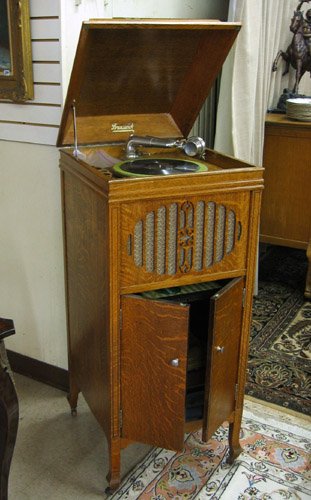

Welker, secretary-treasurer of the company, who had made a special study of tone reproduction and acoustics. prepared to bring out a new idea in sound reproduction, the brain child of Alex A.

'At the same time, the Pollock Manufacturing Company Co. They run absolutely noiselessly, govern perfectly and if handled with care due a good piece of machinery will never get out of order.' The best material and workmanship are used in the manufacture of these motors. Noise in a motor means consumption of power.

The power of the spring is consumed in reproducing the record and not in the production of noise.

Both wormgear spindles are milled, hardened, ground and polished. 'The Phonola Motor is of the latest improved design 'direct spiral drive with worm-gear governor.' Only two wheels perform the transmission of power from the spring to the main-shaft and there to the governor. Pollock was to remain manager of the factory.In August, 1925, the Phonola Company of Canada, Elmira, began to manufacture the Grimes receiving sets for the Canadian Trade.' called the Organola.In the Fall of 1919, the General Phonograph Corporation of New York.purchased Pollock's phonograph factory in Kitchener. In 1915 they began constructing speakers 'based on the principle of the pipe organ.The series of chambers employed were in varied sizes determined by scientific calculation. Records would later be produced under the Phonola label. The Pollock Manufacturing Company of Berlin, Ontario was manufacturing talking machines labeled 'Phonola' before June 1914 when they began importing Fonotopia, Odeon and Jumbo records. It is online here: įrom Roll Back The Years, by Edward Moogk, National Library of Canada, 1975:


 0 kommentar(er)
0 kommentar(er)
